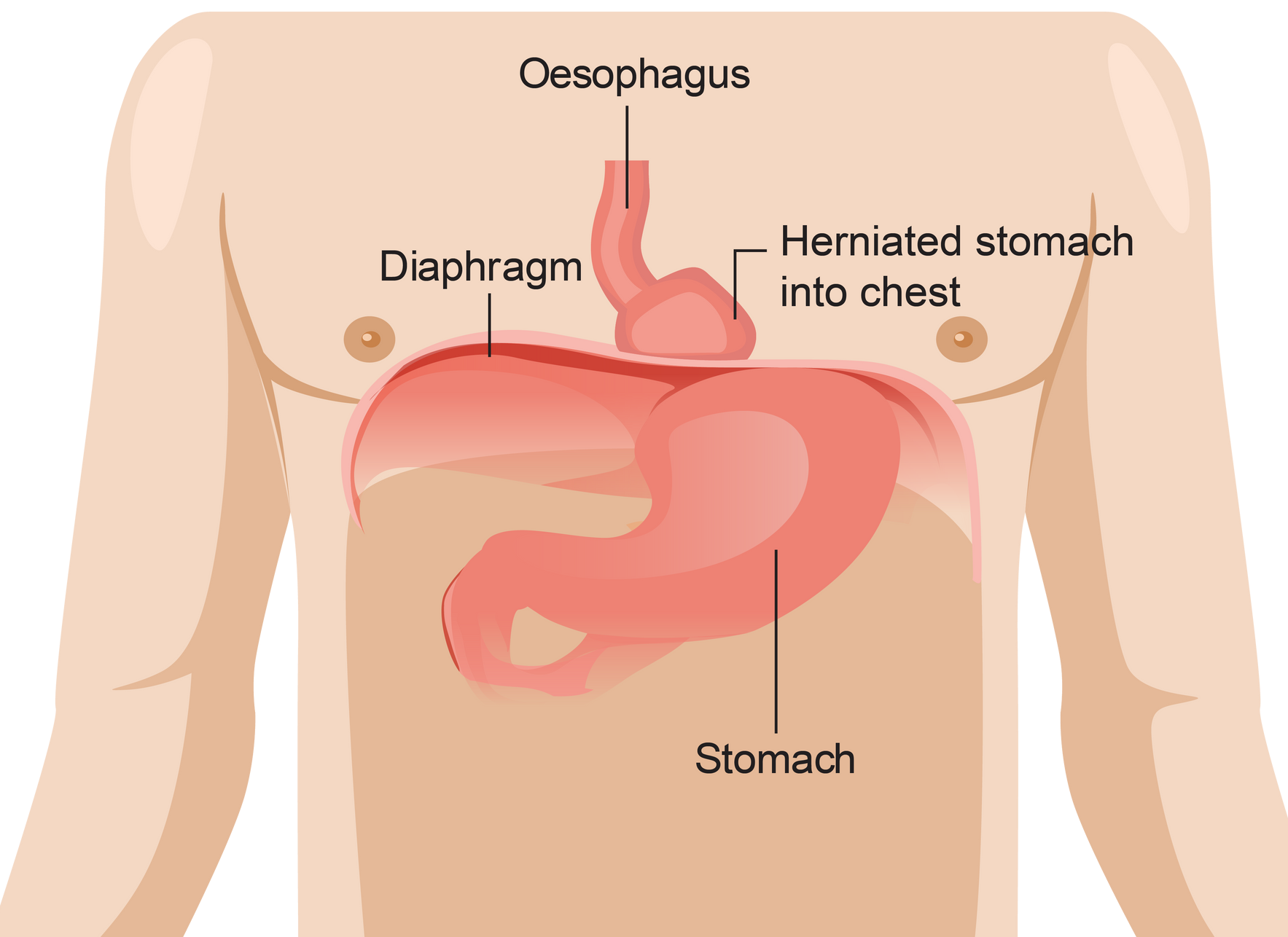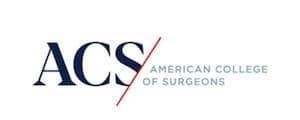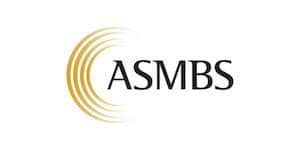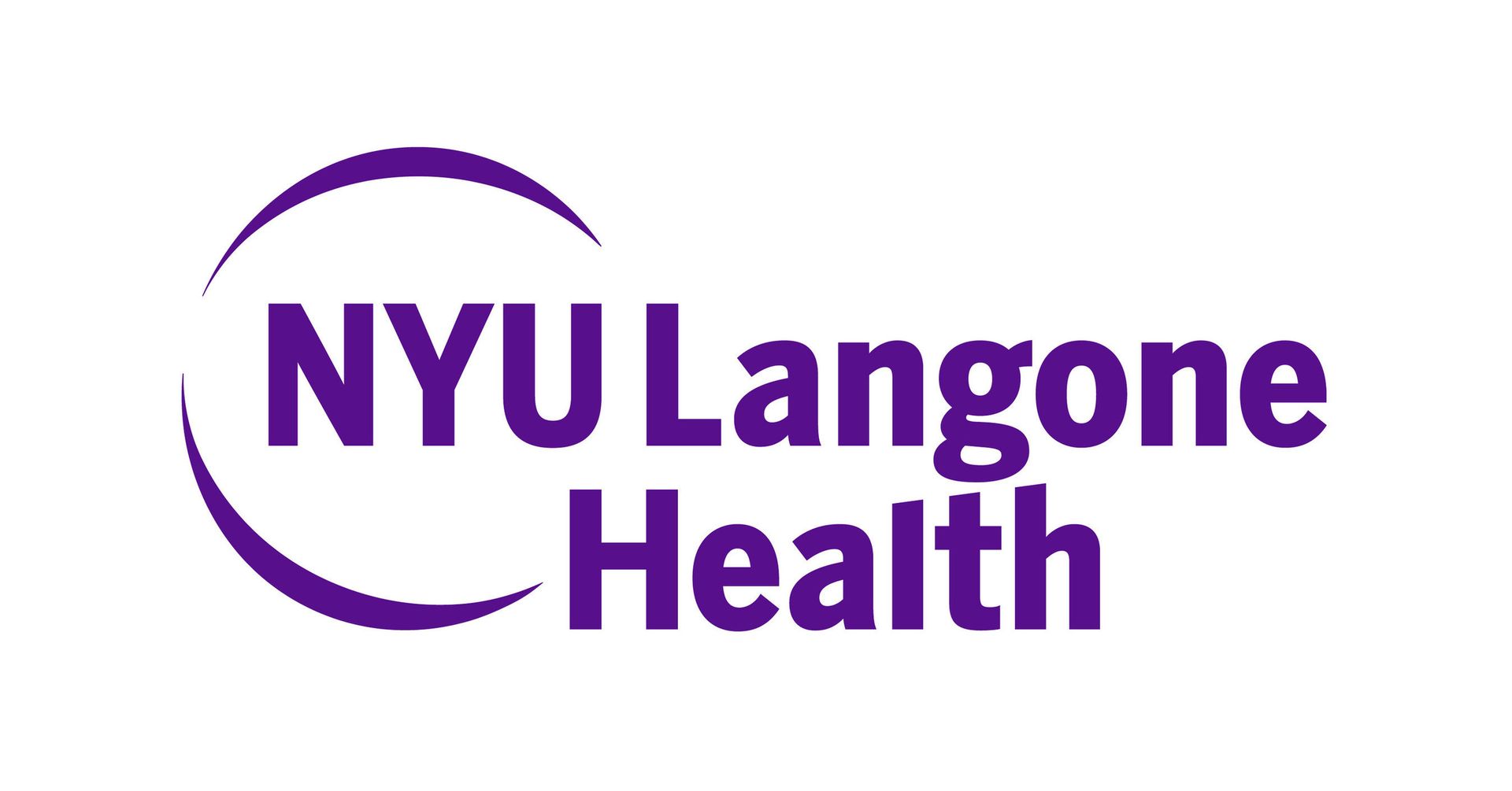Hiatus Hernia Surgery
What is a Hiatus Hernia?
Hiatus hernia refers to the herniation of elements of the abdominal cavity through the oesophageal hiatus (opening in the diaphragm for the oesophagus) of the diaphragm.
Types of Hiatus Hernia
There are two main types of hiatus hernia.
- Sliding Hiatus Hernia: This is the most common type. It occurs when the junction between the oesophagus and the upper part of the stomach moves up through the oesophageal opening in the diaphragm into the chest cavity. The herniated portion of the stomach can slide back and forth, into and out of the chest.
- Paraesophageal hernia: In this case, part of the stomach with or without the gastro-oesophageal junction and with or without other abdominal organs bulges into the chest through the esophageal hiatus in the diaphragm.
Symptoms of a Hiatus Hernia
Most people are not troubled by their hiatus hernia. Still, if reflux of the stomach's acid contents occurs (gastro-oesophageal reflux), you may experience heartburn, a painful burning sensation in the chest.
Sudden regurgitation of acid fluid into the mouth can occur, especially when you lie down or bend forward. These symptoms are a problem when you go to bed and can wake you up.
Some patients experience intermittent symptoms such as epigastric or substernal pain, postprandial fullness, nausea, and retching
Most complications of a paraesophageal hernia are due to mechanical problems caused by the hernia and include the following:
- Gastric volvulus (twisting of the stomach) can occur with large paraesophageal hernias, causing dysphagia, postprandial pain, ischemia, and (rarely) strangulation.
- Bleeding, although infrequent, occurs from gastric ulceration, gastritis, or erosions within the incarcerated hernia pouch.
- Shortness of breath can result from limited lung expansion because of a large part of the stomach or other organs herniating through the hiatus.
Treatment for General Symptoms
General guidelines for treating heartburn and oesophagitis (inflammation of the oesophagus) are:
- Avoid (or use only in moderation) foods and substances that increase the reflux of acid into the oesophagus, such as nicotine (cigarettes), caffeine, chocolate, fatty foods, peppermint, alcohol, spearmint
- Eat smaller, more frequent meals and do not eat within 2-3 hours of bedtime.
- Avoid bending, stooping, abdominal exercises, tight belts, and girdles, all of which increase abdominal pressure and cause reflux.
- If overweight, lose weight. Obesity also increases abdominal pressure.
- Prescription medications.
- Elevate the head of the bed 8 to 10 inches by putting pillows or a wedge under the upper part of the mattress. Gravity then helps keep stomach acid out of the oesophagus while sleeping.
What is Hiatus Hernia Surgery?
Hiatus hernia surgery refers to the surgical intervention to correct a hiatus hernia. The surgical procedure involves repositioning the herniated stomach and repairing the diaphragmatic opening to restore the normal anatomy. The diaphragmatic closure is performed with sutures and may be reinforced with mesh. A fundoplication (wrapping the stomach) and gastropexy (suturing the stomach) are usually also performed to prevent postoperative reflux symptoms and to retain the stomach in the abdominal cavity, respectively.
Who is Suitable for Hiatus Hernia Surgery?
The mere presence of a hiatus hernia is not a reason for surgery. Surgical management is indicated when medical management fails to control symptoms (e.g., gastroesophageal reflux, dysphagia, regurgitation, anaemia, dyspnea, epigastric or abdominal pain) or when there is a complication (e.g., bleeding, obstruction, or gastric volvulus) provided you are fit for an operation.
Benefits of Hiatus Hernia Surgery
Hiatus hernia surgery offers several potential benefits, including:
- Symptom Relief: Surgery aims to alleviate symptoms associated with a hiatus hernia, such as acid reflux, heartburn, chest pain, and difficulty swallowing.
- Improved Quality of Life: By addressing the underlying hernia, surgery can improve an individual's overall quality of life by reducing or eliminating the need for medication and providing long-term relief from symptoms.
- Prevention of Complications: Hiatus hernias can lead to complications like esophagitis, ulcers, bleeding, volvulus and strictures. Surgery helps prevent these complications and their associated risks.
Laparoscopic Hiatus Hernia Repair
Normally, surgery to repair a hiatus hernia is done laparoscopically. This involves five small cuts in the abdomen, using the operating telescope (laparoscope) to return the stomach to the abdomen and reduce the size of the defect in the diaphragm.
What to Expect After Hiatus Hernia Surgery?
After hiatus hernia surgery, several aspects need to be considered:
- Hospital Stay: The hospital stay is typically 1-2 days. You will be monitored for a brief period to ensure a smooth recovery. You can go home a few days after the operation and take a puree diet once comfortable.
- Recovery Diet: Your healthcare provider will provide specific dietary guidelines for recovery. This may include initially consuming a soft or liquid diet and gradually reintroducing solid foods.
- Pain Management: You may experience some post-operative discomfort, which can be managed with prescribed pain medications as your surgeon recommends.
- Activity Restrictions: Your surgeon will provide instructions regarding activity restrictions, including lifting limitations and restrictions on strenuous activities. It's crucial to follow these guidelines to facilitate proper healing.
Prognosis
The overall mortality and morbidity rates associated with laparoscopic paraesophageal hernia repair are low. The mortality and morbidity rates are higher in patients who are ≥70 years of age, those requiring emergency surgery, and those with one or more comorbid illnesses.
Hiatus Hernia Surgery Risks
All operations share some risks of laparoscopic hernia repair, but these risks rarely occur. They include heart attack, stroke, a clot in the lungs (pulmonary embolism), significant bleeding, infection and injury to the bowel. Some risks are specific to laparoscopic hiatus hernia repair, which include:
- About 1% of hernias repair patients will require revision surgery for a recurrent hernia
- There can be an injury to the spleen.
- Sometimes the hernia cannot be repaired with the laparoscope, and an open repair is necessary.
- Occasionally patients have difficulty swallowing after the operation.
- Bloating and discomfort from gas buildup may occur because the person cannot burp.
- Excess gas.
- Recurrence









